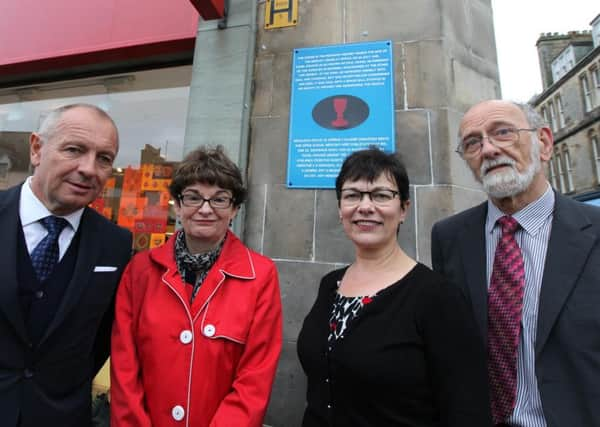St Andrews plaque honours the '˜missing martyr' burned for heresy


The Ambassador of the Czech Republic Libor Secka dedicated the plaque to Pavel Kravar, better known in Scotland as Paul Craw, at recent ceremony in Market Street.
In the summer of 1433, Kravar was accused of spreading heretical ideas and executed by burning, close to the spot where the plaque has been placed.
Advertisement
Hide AdAdvertisement
Hide AdSpeaking at the unveiling ceremony, the ambassador said: “Up to now there has been no actual memorial to him in St Andrews – unlike four others who died in similar circumstances during the Protestant reformation and are commemorated on the Martyrs’ Monument elsewhere in the town.
“Indeed, Pavel Kravař has sometimes been known as the ‘missing martyr’. That is no longer the case.
“Thanks to the generosity of the Czech community in the United Kingdom and to the help of the St Andrews Preservation Trust, his life is now commemorated here.”
Professor Verity Brown, Vice-Principal (Enterprise & Engagement) said: “The University of St Andrews, both now and then, is a community of scholars from all over the world. In the present day our staff and students have travelled from more than 120 countries and all religions, and none, are represented amongst us.
Advertisement
Hide AdAdvertisement
Hide Ad“We remember and reject the intolerances of the past. The character of today’s University is to turn differences into diversity. We celebrate the challenges that the perspective of others brings to our learning.”
The plaque features the shape of a chalice, the symbol of the Hussite movement, and an inscription in English and Czech.